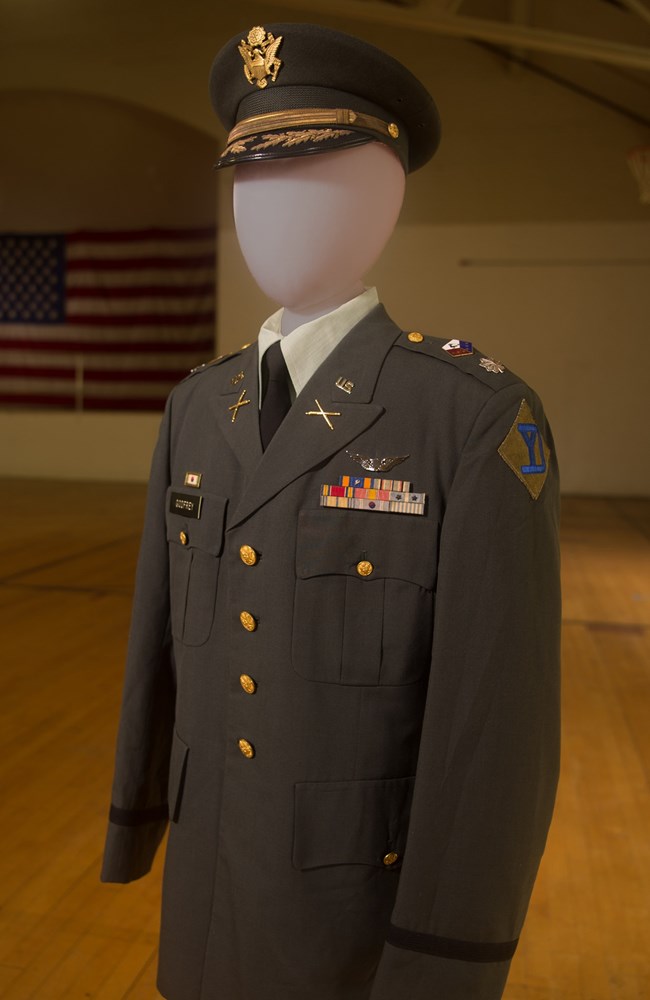Part of a series of articles titled Citizen Soldiers.
Previous: Private Albert Edward Scott
Article

Massachusetts National Guard Photo / MSG Jerry Saslav
Lloyd Godfrey (1919-2003) was born in Boston in 1919, the son of Jamaican immigrants. At the beginning of World War II, he was working as a machinist at the Charlestown Navy Yard and had just married his wife Ruby when he decided to join the elite group of African Americans training to be airmen at the Tuskegee Airfield in Alabama. He trained as first a gunner and then a bombardier navigator on the B-25. In early 1945, his unit was transferred to Freeman Field in Indiana. Despite official regulations prohibiting segregation, the Commander of Freeman Field refused to allow Black officers into the officer’s club. In response, a non-violent protest was planned and executed that resulted in the arrest of 101 men, including Flight Officer Godfrey. This event foreshadowed the protests of the Civil Rights era.
Godfrey went on to train as a pilot back at Tuskegee Airfield and with the end of WWII returned to Boston. After a short stint in the Air Force Reserve, he joined the Mass. National Guard in 1949 as a pilot assigned to a Black field artillery unit. In 1950, the 272nd Field Artillery was mobilized for the Korean War. At Camp McCoy in Wisconsin, the unit was stripped of its Black officers during a series of hearings, and 1st Lt. Godfrey was transferred to the 7th Infantry Division. He served as a pilot in Korea, earning 4 Air Medals during his year-long tour of duty.
After Korea, Godfrey returned to the MA National Guard, and spent the rest of his career in 26th (Yankee) Division aviation and artillery units based in Massachusetts.
Part of a series of articles titled Citizen Soldiers.
Previous: Private Albert Edward Scott
Last updated: June 28, 2022